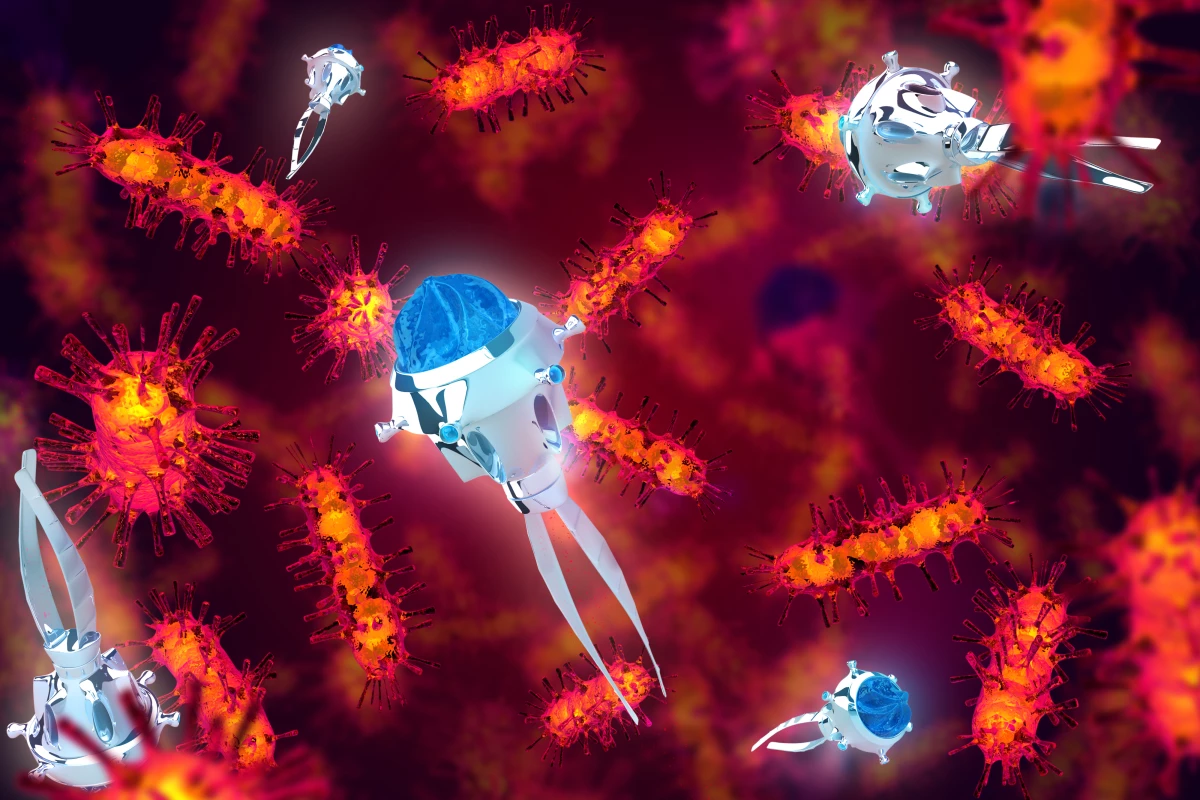Researchers working at the University of California, San Diego have claimed a world first in proving that artificial, microscopic machines can travel inside a living creature and deliver their medicinal load without any detrimental effects. Using micro-motor powered nanobots propelled by gas bubbles made from a reaction with the contents of the stomach in which they were deposited, these miniature machines have been successfully deployed in the body of a live mouse.
The picayune robots used in the research were tubular, about 20 micrometers long, 5 micrometers in diameter, and coated in zinc. Once the mouse ingested these tiny tubes and they reached the stomach, the zinc reacted with the hydrochloric acid in the digestive juices to produce bubbles of hydrogen which then propelled the nanobots along like miniature rockets.
Reaching speeds of up to 60 micrometers per second, the nanobots headed outwards toward the stomach lining where they then embedded themselves, dissolved, and delivered a nanoparticle compound directly into the gut tissue.
According to the researchers, of all the nanobots deployed in the stomach of the mouse, those that reached the stomach walls remained attached to the lining for a full 12 hours after ingestion, thereby proving their effectiveness and robust nature.
Further, after the mouse was eventually euthanized and the stomach was dissected and examined, the presence of the nanobots also showed no signs of raised toxicity levels or tissue damage. According to the researchers this was in line with their expectations, particularly given that zinc is effectively also a multipurpose nutrient.
While nanobots have been used before on organic tissue – such as in the destruction of the Hepatitis C virus – and still others have been designed to be propelled using external forces within a living creature, the University of California micromachines are the very first self-propelled, nanoparticle delivering nanobots ever. And it is this fact that makes the research team believe that its success so far merits further research and cites the fact that this is now the beginning of a proven method to deliver targeted drug administration.
For everyone else, this is exciting technology that may well help to medically treat human beings in the not-too-distant future. Of course, this is early days in this research and a plethora of continuously successful tests will need to be run before it can even be considered by the likes of the US Food and Drug Administration to approve its use in people. But these first steps are vital in what may one day be a commonplace, targeted, and safe alternative to traditional high-dose medications.
No announcement has been made regarding further tests or the possibility of human-based trials.
The research was published in the journal ACS Nano.
Source: UC, San Diego




